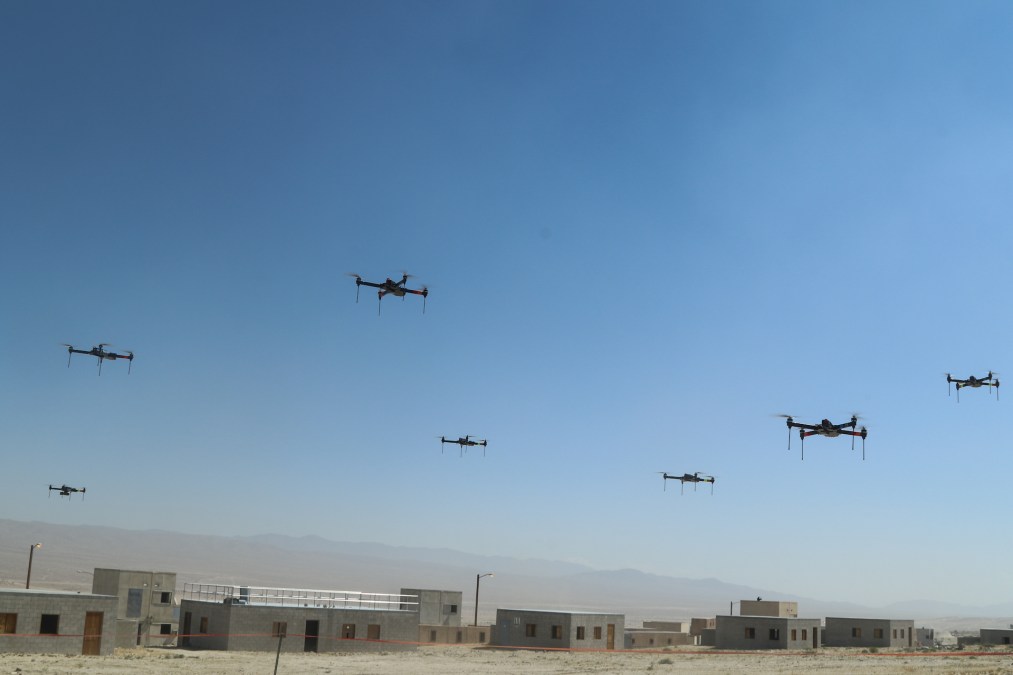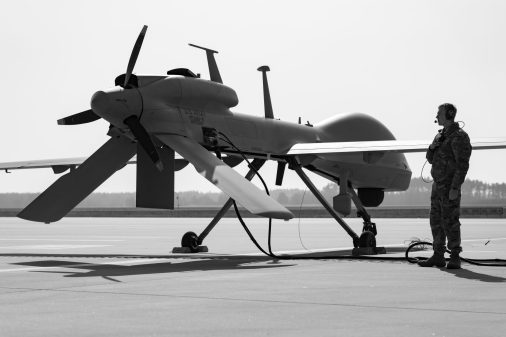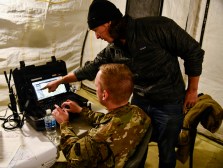Army wants AI tech to help manage airspace operations

The Army is reaching out to industry as it looks for AI technologies to help commanders manage airspace environments that are growing increasingly complex with the integration of new systems like drones.
The service issued a request for information Wednesday to help the program executive office for intelligence, electronic warfare and sensors and the program manager for Next Generation Command and Control (NGC2) get feedback from industry and identify potential solutions.
The Army wants to mitigate the cognitive burden for commanders and boost their situational awareness.
“As the Army continues to integrate advanced technologies and expand its use of unmanned aerial systems (UAS), rotary-wing, fixed-wing, and emerging platforms, traditional airspace management methods are being challenged by the growing scale, speed, and complexity of operations,” officials wrote in the RFI.
“Traditional airspace management systems often struggle to process and respond to the vast amounts of data generated during operations, limiting their ability to provide actionable insights in real time,” they added.
The proliferation of drones will make airspace management even more complicated. The Army and the other services are under pressure from Secretary of Defense Pete Hegseth to quickly integrate more small unmanned aerial systems across the force. Hegseth issued a directive earlier this month with the aim of accelerating that process.
Meanwhile, the Pentagon is also pursuing new counter-drone tools, air-and-missile defense systems, and command-and-control tech to address growing threats.
The expanding use of UAS, loitering munitions and autonomous platforms will have to be taken into account by the U.S. military’s airspace management frameworks, which must also be able to deal with the presence of large numbers of friendly, neutral and enemy players — as well as other weapon systems and adversaries’ electronic warfare capabilities, the RFI noted.
“Army airspace management must adapt to rapidly changing mission requirements, including the need for real-time deconfliction, airspace prioritization, and coordination with joint and coalition forces,” officials wrote. “Effective airspace management must account for the coordination of indirect fires, air defense systems, and other effects to ensure mission success while minimizing risk to friendly forces.”
The Army is hoping artificial intelligence tools can lend a helping hand.
“AI-enabled airspace management solutions have the potential to address these challenges by leveraging machine learning, predictive analytics, and automation to enhance situational awareness, optimize airspace allocation, and enable rapid decision-making. Such systems can analyze real-time data from multiple sources, predict airspace usage patterns, and recommend proactive measures to improve safety, efficiency, and mission effectiveness,” per the RFI.
Responses to the RFI are due Aug. 29.
The service is looking to put vendors’ technologies through their paces later this year at a Joint Pacific Multinational Readiness Center event.
“The Army is seeking interested industry partners to deliver a minimum viable product (MVP) for an AI-enabled airspace management solution that enhances UAS operations during JPMRC Exercise 26-01,” officials wrote. “The MVP must be operationally ready for deployment to the 25th Infantry Division by November 2025 and capable of addressing some of the unique challenges of UAS management in contested and congested environments.”






